鑑賞から逃れる|Couldn't See Well
広々とした空間に絵画、彫刻(仏像)、映像(ディスプレイ)、3つの作 品が動力を持った既製品と組み合わされ、配置されている。鑑賞者が作品に歩み寄ると「見ること」(鑑賞)から逃れるように、絵画は床に伏せ、彫刻は背を向け逃避し、映像は壁伝いに遠ざかっていく。莊子とマルセル・デュシャン、Googleと無意識(混沌)といったキーワードを結びつけながら、美術や哲学、テクノロジーにおける東洋と西洋の「知性」の捉え方の違いに触れ、なぜ鑑賞から逃れなければならないのか、それぞれの作品がその理由を語る(音声が流れる)。一方、空間に点在するディスプレイは、その声を端から拾い上げ文字に変換し、Google検索にかけ、ひたすら検索結果を空虚に表示し続ける。そのようにして、本作では脱人間中心主義的芸術の円環が構築される。例えば人工知能をはじめとした現行の先端テクノロジーは、還元していくとデカルトの合理主義的哲学、引いては西洋的な人間中心主義に辿り着くわけだが、そこに対照的な東洋思想を照射することで、脱人間中心主義の可能性や別の「知性」について検討する。
This installation work consists 3 artworks, a painting (abstract drawing on canvas), a sculpture (replicated buddha) and a video (on the display). However, each artwork that combined with ready made product which has movement as function attempt to avoid to be appreciated from spectator (human). If you close to the artwork, painting lies down on the floor, sculpture turns away and goes far off, video slides away along the wall. Each artwork speaks about the reason why the Art should be escape from being seen/understood by human. Furthermore, there are several displays in the space and those are intently showing process of searching the meanings on Google by using voice from the artworks as input. Those are worked as metaphor for humans behavior in the museum or gallery that searching the meanings meaninglessly. Their insistence based on eastern philosophy from before the century especially Zhuangzi's thoughts who has criticized intelligence that human believed in that era. Zhuangzi has explained so many facts around our life by his own logic and witty allegory and those are still suggestive even for modern people. Now, the art, technology, society, every system, every rules organizing this world are born and grew up in western society and dominant our life. Thus, artworks preaches the necessity to relativate our society established with western philosophy by irradiate eastern thoughts accompany by movement which escape from human. Through this artwork, posing the problems about mechanism/politics of seeing the Art, or modern humans physicality which is dominated by languages.
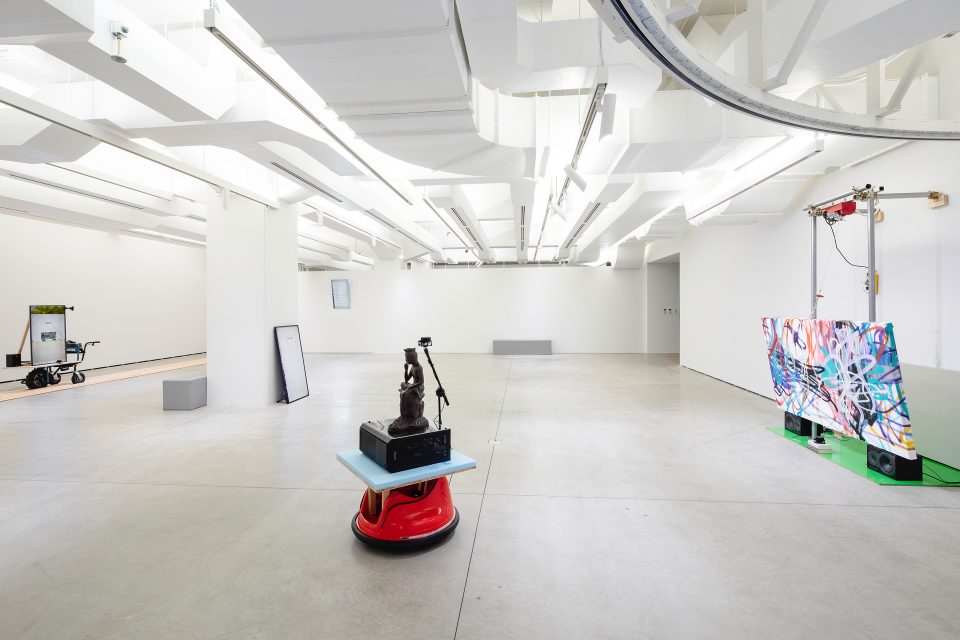
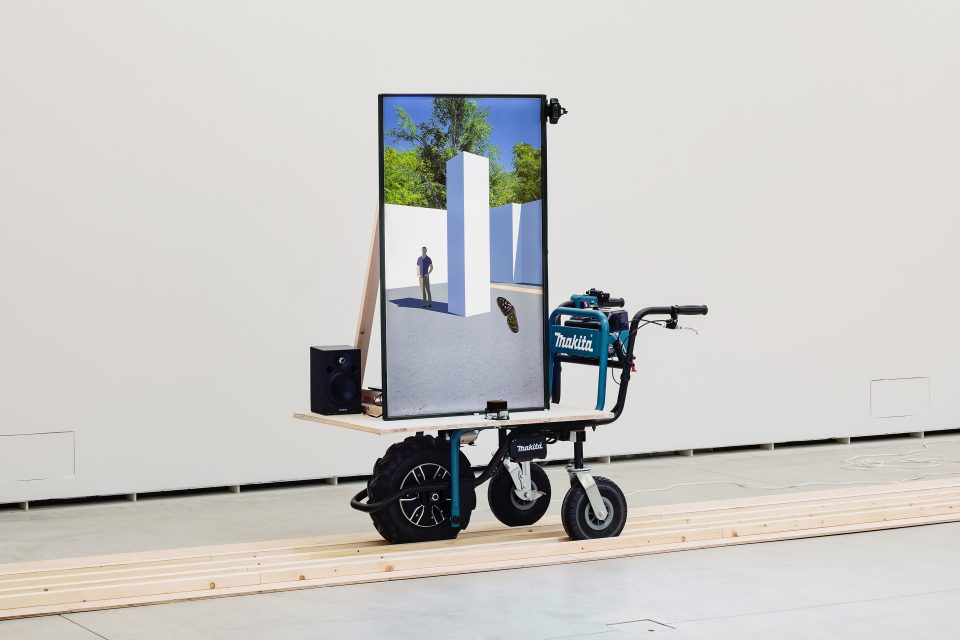
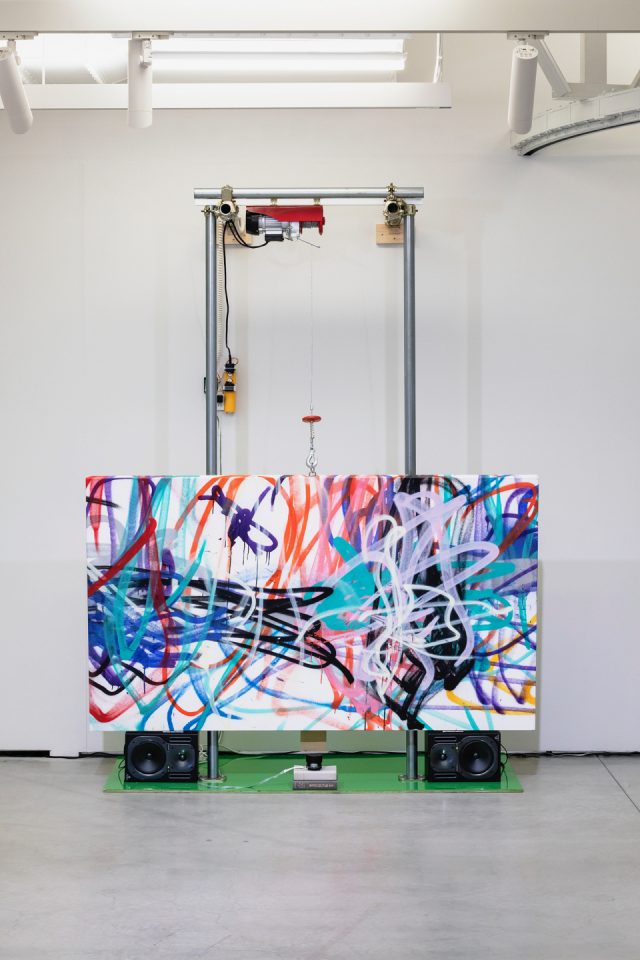
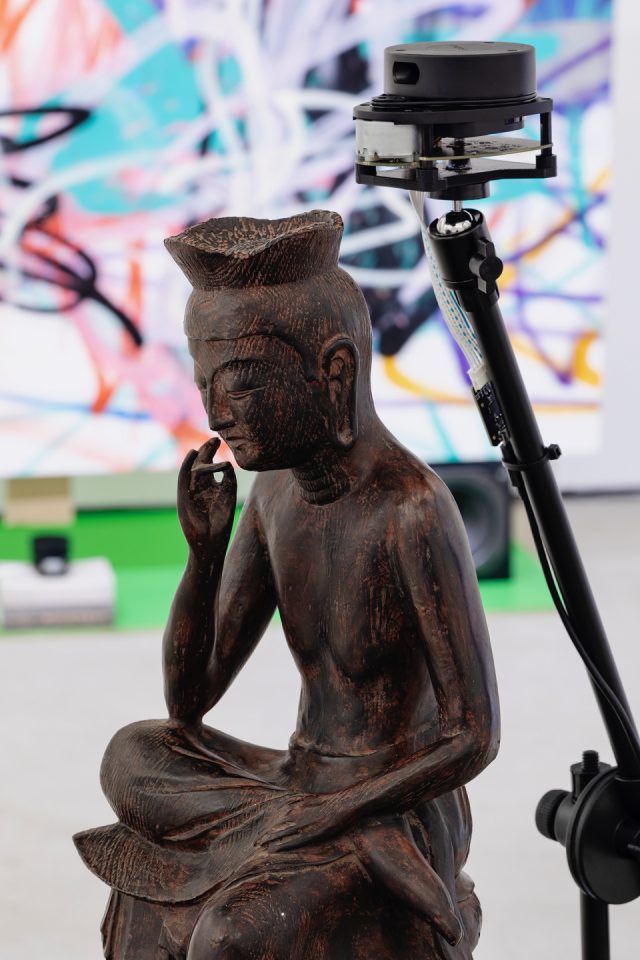
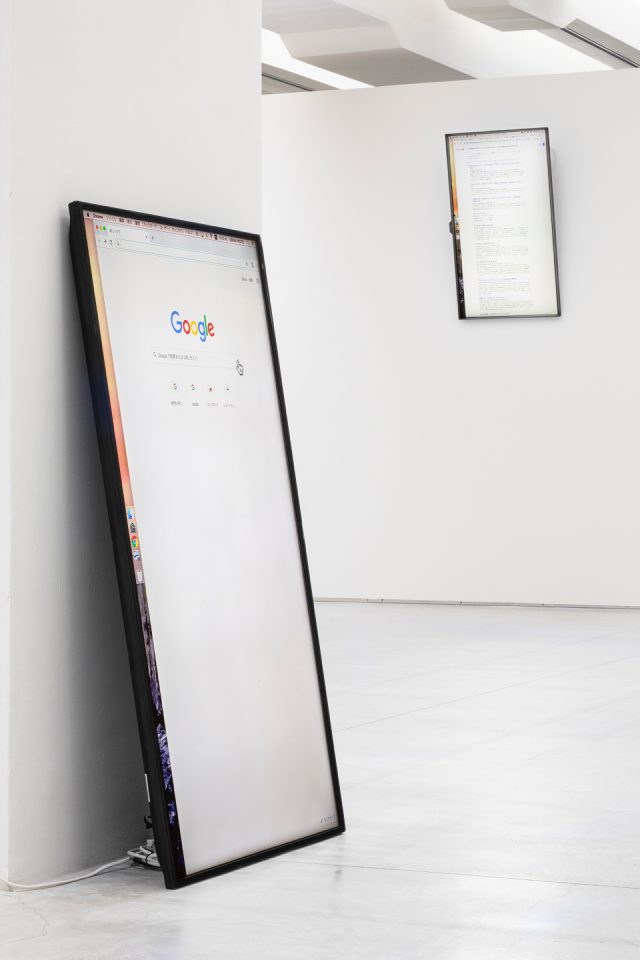
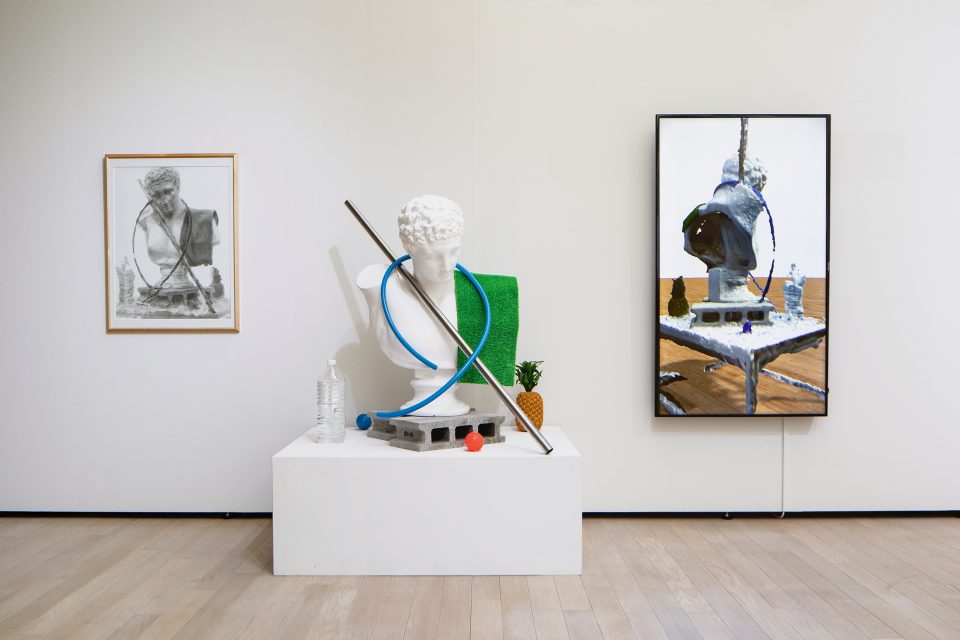
Support (System Engineering) by Takanobu Inafuku (HAUS Inc.)
Photo by Shinya Kigure
Related Exhibitions
- 2021|新しい実存 @Unexistence Gallery(-)
- 2019|Art Meets 06 門馬美喜/やんツー @アーツ前橋(群馬)
- 2021 | New Existentialism @Unexistence Gallery(unknown place)
- 2019 | Art Meets 06 Momma Miki / yang02 @Arts Maebashi(Gunma, Japan)